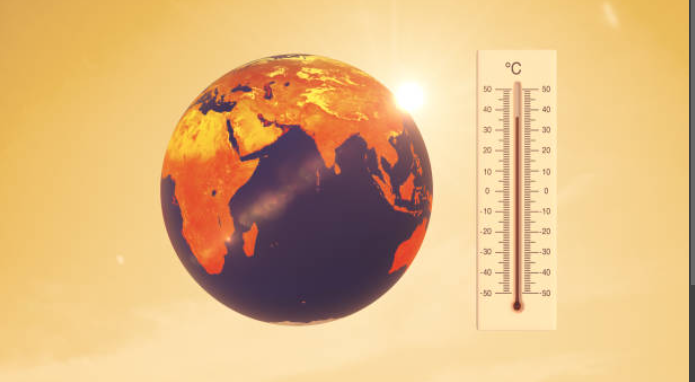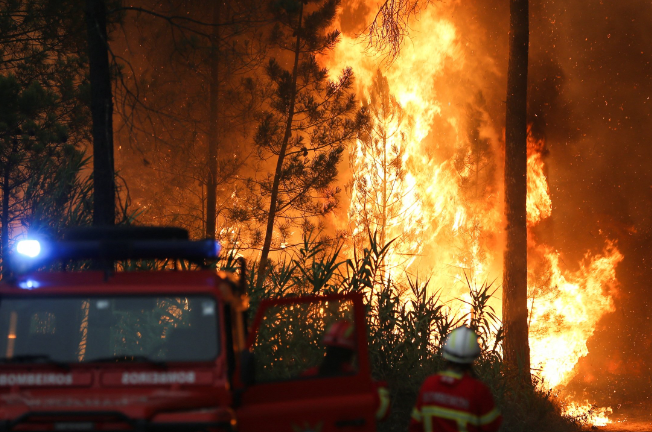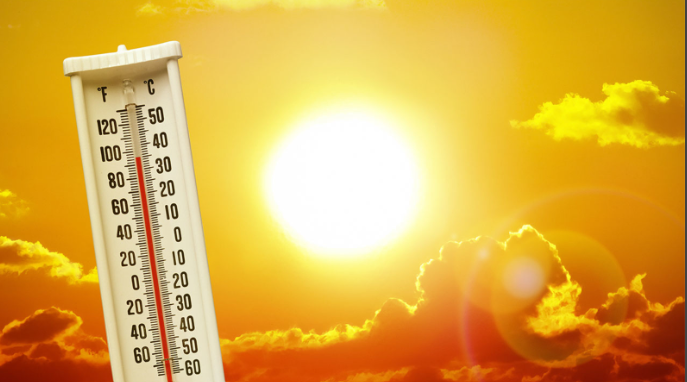Additionally, a variety of additional chemical processes that are dangerous for human health can be brought on by extreme heat wave.
The UN warned on Wednesday that climate change is causing heatwaves to become more extreme and frequent, which in turn creates a “witch’s brew” of pollutants that endangers the health of people and other living things.
The most obvious symptom of air pollution brought on by heat waves may be the wildfire smoke that has recently choked cities from Athens to New York.
However, as the World Meteorological Organization noted in its yearly Air Quality and Climate Bulletin, severe heat can also lead to a variety of other chemical processes that are harmful to human health.

“Heatwaves worsen air quality, with knock-on effects on human health, ecosystems, agriculture, and indeed our daily lives,” said WMO director Petteri Taalas in a statement.
According to a recent analysis by the Energy Policy Institute at the University of Chicago (EPIC), sand and wildfires are “the greatest external threat to public health” globally, along with fine particulate air pollution from things like automobile and industrial emissions.
That “climate change and air quality cannot be treated separately” was emphasized by Taalas. “They are related and must be dealt with jointly to end this cycle.”
Temperatures are rising and heatwaves

Also read-Jamaica Announces An Outbreak Of Dengue Fever With 100 Of Confirmed And Suspected Cases
Despite the fact that the analysis released on Wednesday was based on data from 2022, Taalas warned that the temperatures “what we are witnessing in 2023 are even more extreme.”
The Earth just experienced its hottest three months on record, according to the Copernicus Climate Change Service of the European Union. Last July was the hottest month ever observed, followed by August, and 2023 is on pace to be the hottest year ever.
For the state of the air, that is bad news.
According to the World Meteorological Organization, “Air quality and climate are interconnected because the chemical species that affect both are linked, because the substances that cause climate change and the degradation of air quality are frequently emitted by the same sources, and because changes in one inevitably lead to changes in the other.”
It mentioned, for example, how burning fossil fuels releases carbon dioxide and nitrogen oxide into the atmosphere, which not only act as heat-trapping greenhouse gases but can also result in the development of harmful pollutants like ozone and nitrate aerosols.
In the meanwhile, it’s generally accepted among scientists that climate change is creating more intense and frequent heatwaves, which in turn is raising the danger of more severe wildfires, according to the WMO.
How are wildfires and heat waves related?

According to Lorenzo Labrador, a WMO researcher at the Global Atmosphere Watch network, which put out Wednesday’s Bulletin, “heatwaves and wildfires are closely linked.”
“Smoke from wildfires contains a witch’s brew of chemicals that affects not only air quality and health, but also damages plants, ecosystems, and crops — and leads to more carbon emissions and, consequently, more greenhouse gases in the atmosphere,” he said in the statement.
The report’s 2022 data illustrated how last year’s heatwaves in the Northwestern United States sparked wildfires, which resulted in poor air.
High temperatures in Europe, coupled with unusually large amounts of desert dust reaching the continent, exacerbated ground-level ozone pollution as well as particulate matter concentrations, the report stated.
Ozone close to the Earth’s surface is damaging to human health, even while ozone at high altitudes, or in the stratosphere, offers humans essential protection from the sun’s harmful ultraviolet rays.
Additionally, it lowers crop output, with ozone-induced losses for staple food crops averaging 4.4–12.4% globally and reaching 15–30% for wheat and soybeans in some regions of India and China.
Also read-Inadequate Treatment Is Received by 4 of 5 Blood Pressure Patients
images source-google




































